#charles grignion
Photo
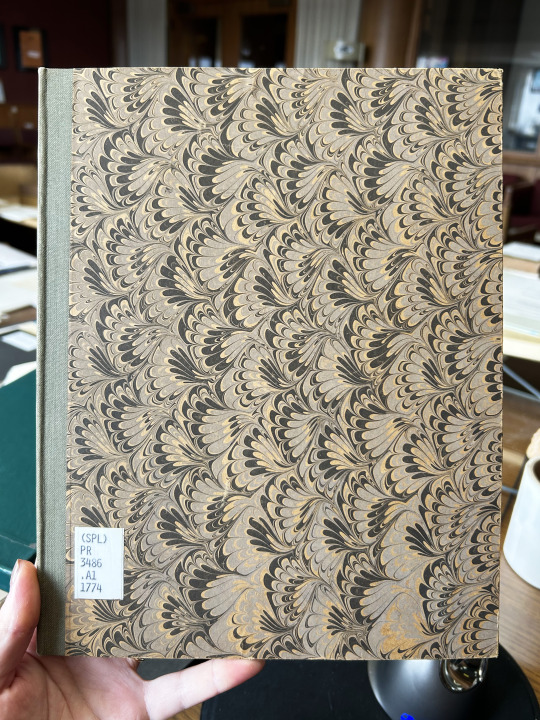
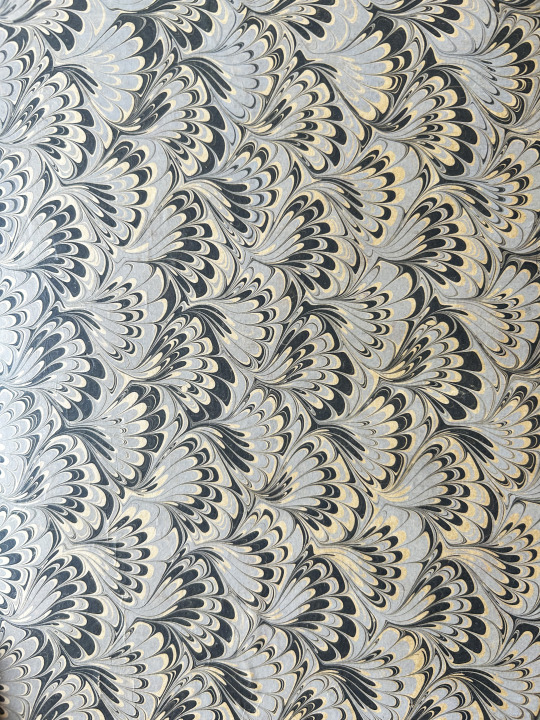
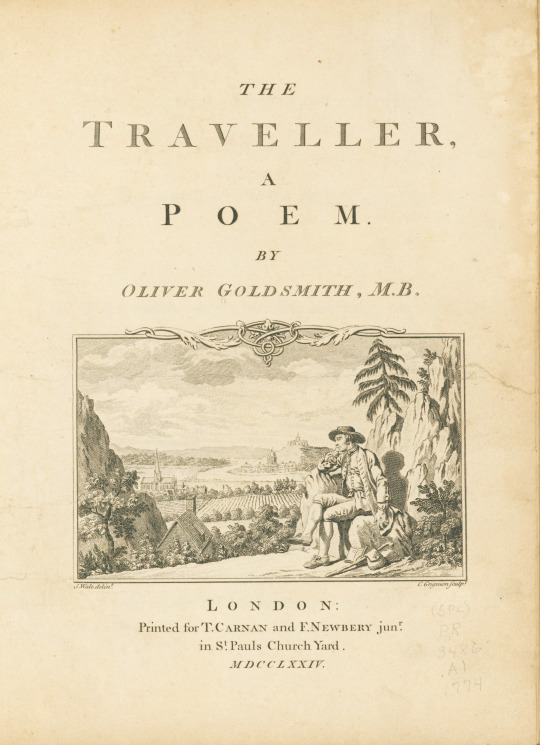

Marbled Monday
This week’s Marbled Monday is The Traveller, A Poem by Oliver Goldsmith (1728-1774) with an engraving designed by Samuel Wale (1721-1786) and engraved by Charles Grignion (1721-1810). Goldsmith’s best known work may be his novel The Vicar of Wakefield, though he also wrote several other poems. This book was printed for T. Carnan and F. Newbery Junior in St. Paul’s Church Yard, London, in 1774.
The binding is not contemporary to the work inside it, and was likely done at some point during the 20th century. This marbling is a bouquet or peacock pattern, done in a dark grey, light grey, and cream color scheme that is paired with a light grey-green book cloth for the spine.
View more Marbled Monday posts.
-- Alice, Special Collections Department Manager
#Marbled Monday#The Traveller#The Traveller A Poem#Oliver Goldsmith#Samuel Wale#Charles Grignion#The Vicar of Wakefield#peacock pattern#bouquet pattern#marbling#18th century#T. Carnan and F. Newbery
49 notes
·
View notes
Text

Clara Rhinoceros from Bernhard Siegfried, Jan Wandelaar, Charles Grignion the Elder - 1749
0 notes
Text

'muscle-man seen from the front with rhinoceros' by charles grignion, 1747 in spectacular bodies: the art + science of the human body from leonardo to now - martin kemp + marina wallace (2000)
57 notes
·
View notes
Text
Interesting bits from Yale University Library:

Probably the best find was that they have HD version of engraving of King Henry the VIII and the Emperor Charles the V (and you can zoom in and look at the details on their webpage), based upon from the original picture once in the Strawberry Hill Gallery. Now it seems lost.
Several engravings of Catherine Parr(esentially same outfits, but great quality).

Drawing after portrait of Henry VII, created in 1808 by Harding, G. P. (George Perfect):



I would say he nailed it. This is by same artist:

Although i am not so sure that is autentic Tudor stained glass.
Then there is family portrait of Henry VII, mistaknly labelled family of Henry V, it is by Grignion, Charles, 1721-1810, printmaker

And i am puzzled how come this shows better faces, that the original painting. And better ermine.


Of course the engraver could have taken artistic license. But then there are faces which are very similiar...so why arent they all?

It irritates me.


And not just because the engraving has more pleasing faces. But also, because i know how many royal portraits are altered and institutions owning them dont bother to mention it-even if it is obvious.
This part at least is same:


10 notes
·
View notes
Text

Engraving of Clara and a human skeleton for Tabulae sceleti et musculorum corporis humani, drawn by Jan Wandelaar, engraved by Charles Grignion the Elder, 1749.
Via: https://en.wikipedia.org/wiki/Charles_Grignion_the_Elder
4 notes
·
View notes
Photo

A skeleton with snakes and rats by Charles Grignion
#memento mori#death stranding#skull#skeleton#bones#art#etching#1800s#british#london#british art#british artist
1 note
·
View note
Text
Referencing
Holly Levell (2019) Supermarket Stitch. Available at: https://www.hollylevell.com/archive (accessed 6th October 2022)
Matt Peers (2022) Bourkes Regulars. Available at: https://www.mattpeers.photography/bourkes-regulars-gallery (accessed 14th October 2022)
The Tate (2022) Jim Dine. Available at: https://www.tate.org.uk/art/artworks/dine-no-title-p02532 (accessed 13th October 2022)
The Tate (2022) Kitchen Sink Painters.Available at: https://www.tate.org.uk/art/art-terms/k/kitchen-sink-painters (accessed 2nd November 2022)
The Tate (2022) Still Life with Chip Frier. Available at: https://www.tate.org.uk/art/artworks/bratby-still-life-with-chip-frier-t00104 (accessed 2nd November 2022)
The Tate (2022) Four Prints of an Election, plate 2: Canvassing for Votes, engraved by Charles Grignion. Available at: https://www.tate.org.uk/art/artworks/hogarth-four-prints-of-an-election-plate-2-canvassing-for-votes-engraved-by-charles-t01796 (accessed 3rd November 2022)
0 notes
Photo

Charles Grignion, after Carle Van Loo - David playing harp for King Saul.
4 notes
·
View notes
Text

George Frideric Handel (23 February 1685 (O.S.) [(N.S.) 5 March] – 14 April 1759)
German, later British, Baroque composer who spent the bulk of his career in London, becoming well-known for his operas, oratorios, anthems, and organ concertos.
Born the same year as Johann Sebastian Bach and Domenico Scarlatti, Handel is regarded as one of the greatest composers of the Baroque era, with works such as Messiah, Water Music, and Music for the Royal Fireworks remaining steadfastly popular. One of his four coronation anthems, Zadok the Priest (1727), composed for the coronation of George II, has been performed at every subsequent British coronation, traditionally during the sovereign's anointing. Another of his English oratorios, Solomon (1748), has also remained popular, with the Sinfonia that opens act 3 (known more commonly as "The Arrival of the Queen of Sheba") featuring at the 2012 London Olympics opening ceremony. Handel composed more than forty operas in over thirty years, and since the late 1960s, with the revival of baroque music and historically informed musical performance, interest in Handel's operas has grown. (Wikipedia)
From our stacks: Illustration “George Frederic Handel. C. Grignion sculp.” from A General History of the Science and Practice of Music, By Sir John Hawkins. A New Edition, with the Author’s Posthumous Notes. Vol. I. London: Novello, Ewer & Co.; New York: J. L. Peters, 1875.
#george frideric handel#handel#music#composer#music history#baroque#baroque music#composers#english music#english composer#book#books#charles grignion#grignion#book illustration#illustration#old books#detroit public library
37 notes
·
View notes
Text

Charles Grignion - Piazza del Popolo, la Coltellata (“A Tragedy”), 1790
0 notes
Photo

Portrait of a Gentleman, Half-length, in van Dyck Costume (detail),
Charles Grignion the Younger (British, 1754–1804)
#He's soooo prettyyyy#Charles Grignion the Younger#English artist#Portrait#Portraiture#Artedit#Art detail#Art
1K notes
·
View notes
Photo

Un portrait d'un gentilhomme, demi-longueur, en costume de van Dyck
(A portrait of a gentleman, half-length, in van Dyck costume)
Charles Grignion the Younger
961 notes
·
View notes
Photo

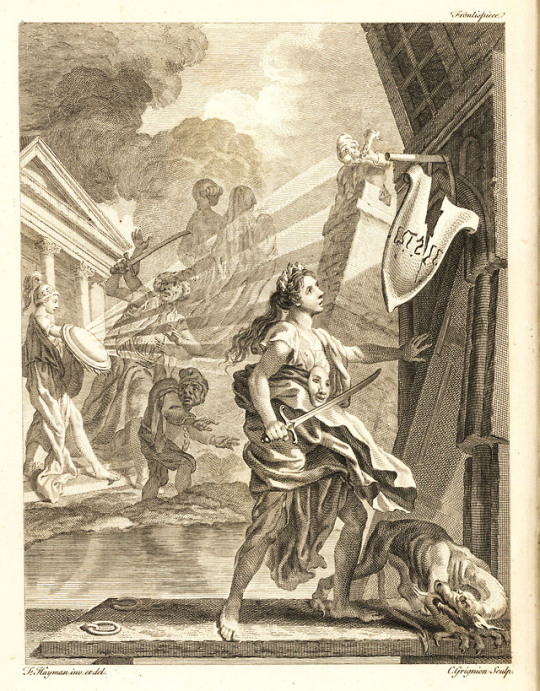

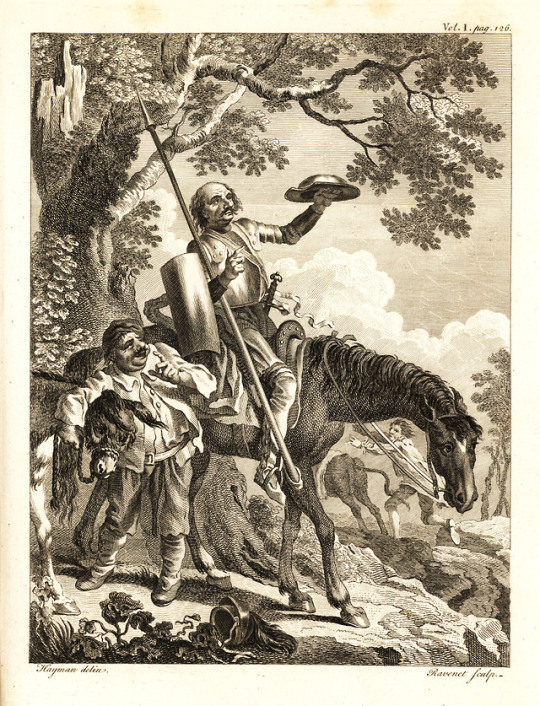



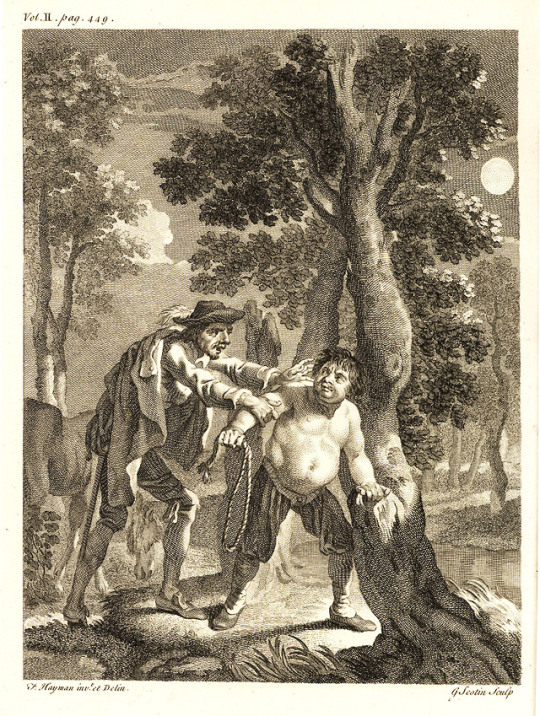

Staff Pick of the Week
The History and Adventures of the Renowned Don Quixote
This lovely two volume set came across my desk recently after being treated to some much-needed preservation measures.
This particular version of Cervantes’s classic work, published in 1755 by Andrew Millar in London, is an English translation by Tobias Smollet (who in turn was revising the 1742 translation by Charles Jervas). Smollet was himself a poet and author, known for similarly picaresque tales. George Orwell praised him as "Scotland's best novelist."
The translation is accompanied by 28 copper plate engravings or etchings, designed by Francis Hayman. Hayman, also a painter, illustrated many popular texts, including Milton’s Paradise Lost and Samuel Richardson’s Pamela. He was one of the founding members of the Royal Academy of Arts in London as well as its first librarian. Hayman was highly influential in establishing book illustration practices in England and it has been said that "some of his works were so popular that the plates were used until they wore out." Although Hayman designed the illustrations, the engravings were carried out by other artists, as noted in the bottom right-hand corner of each engraving, including French engravers Gérard Jean Baptiste Scotin II and Simon François Ravenet, and British engraver Charles Grignion the Elder. For those who enjoy art and book history, we direct you to John E. Ruch’s article “Francis Hayman's Drawings for Moore's Fables” to learn more about Hayman’s role in book illustration.
Enjoy!
View more staff picks.
-- Katie, Special Collections Graduate Intern
#copperplate engraving#don quixote#Miguel de Cervantes#illustrated books#Staff Pick of the Week#Katie#18th century#book history#Andrew Millar#Tobias Smollet#Charles Jervas#Francis Hayman#Gérard Jean Baptiste Scotin II#Simon François Ravenet#Charles Grignion the Elder#John E. Ruch#engravings#etchings
26 notes
·
View notes
Photo

Captain Sir Richard Pearson - Charles Grignion II
4 notes
·
View notes
Photo


Portrait of a gentleman in van Dyck costume by Charles Grignion the Younger (1754-1804) // Neil Codling of Suede by Dean Chalkley, 2018
inspired by @sauveandelegant (x)
8 notes
·
View notes
Text
Epoka dwóch Ludwików
Dziś patrzymy na Francję, która wydała Ludwika Grignon de Montfort. Słynnego mariologia, od którego nabożeństwa i traktatu Totus Tuus Maria wziął swoje zawołanie herbowe Jan Paweł II Wielki, nasz geniusz słowiański.
Ze świętymi mówię, że Najświętsza Maryja jest rajem ziemskim nowego Adama (Chrystusa),który wcielił się tam za sprawą Ducha Świętego, by działać w Nim niepojęte cuda. Maryja jest…

View On WordPress
#Charles le Brun#Jan Paweł II Marialis Cultus#Jan Paweł II Rosarium Virginis Mariae#Jan Paweł II Totus Tuus#Jan Paweł II Wielki#Ludwik Maria Grignion de Montfort.#Nicolas Poussin
1 note
·
View note